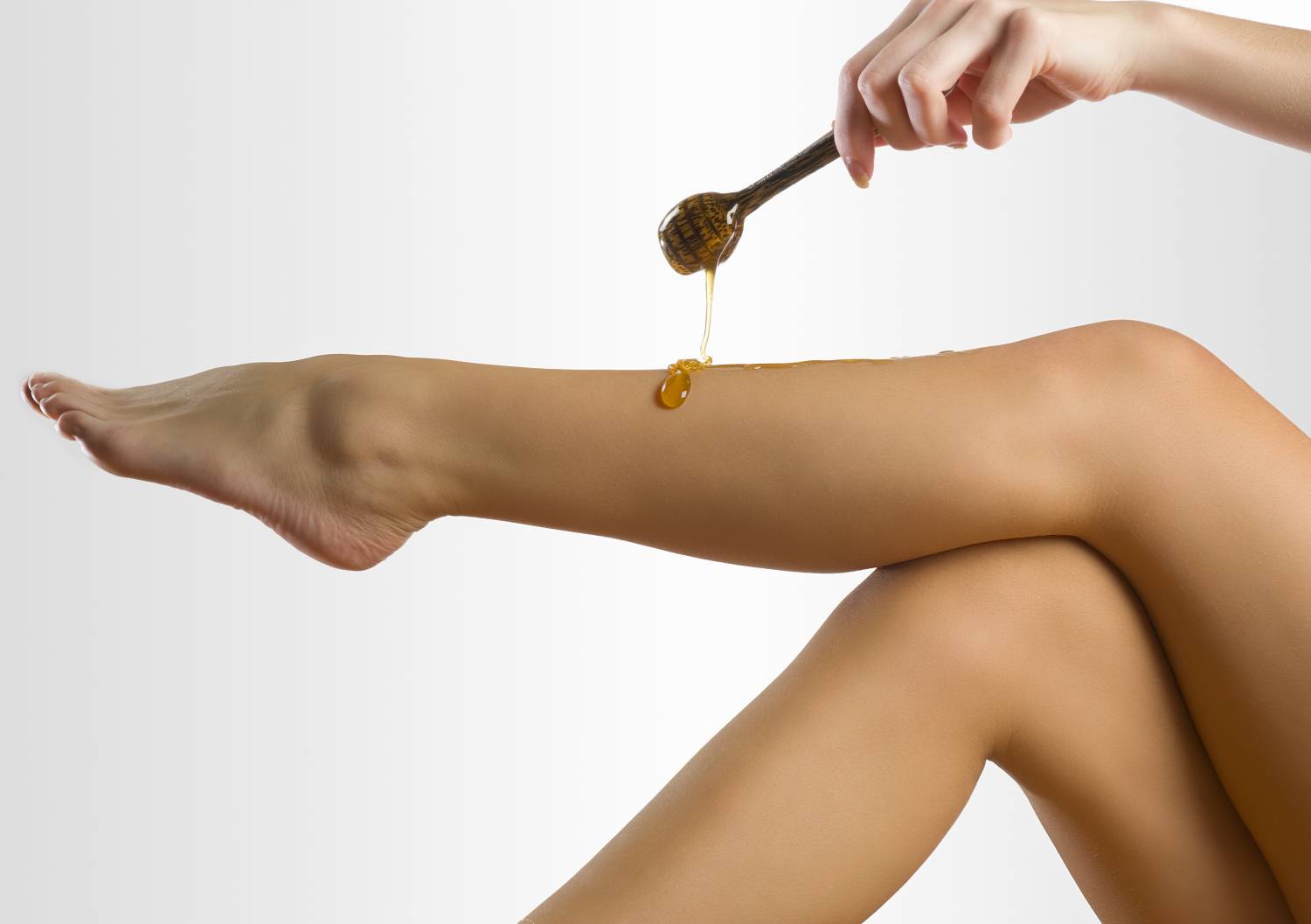Redness or pimples/spots after waxing
Redness or pimples/spots after waxing
a) Redness immediately after waxing
Almost everybody has slight redness of the skin immediately after waxing. However, this will disappear within several hours. This is especially the case with fluid wax which you remove with depilatory wax strips, but also with ready-made waxing strips, besides the hairs, the wax will also stick to the skin. Waxing also works as an exfoliant, and the skin will feel softer after waxing.
There are various ways to minimise redness after waxing:
1) Ensure that the skin is well-prepared for waxing. When using an oil-soluble wax, the skin needs to be properly clean, dry and especially grease-free. Do not use any – greasy – creams or body lotions on the day before you are going to wax. Always wax before taking a shower and not afterwards. When using a water-soluble wax, the skin will need to be properly dry. For example, do not swim or bathe shortly before you intend to wax. PLEASE NOTE: if you are used to frequently using considerable amounts of greasy lip balms, waxing your upper lip with oil-soluble wax is usually not a good idea. If you apply grease on your lips and especially next to your lips day in day out, it will be very difficult to get the skin grease-free in that area. In this case, use hard – stripless – wax for waxing your upper lip.
2) Always use talcum powder after cleaning the skin and before you apply the wax. Talcum powder absorbs grease and moisture and moreover ensures that the wax sticks to the skin less.
3) Take care with your waxing technique, particularly the proper stretching/tightening of the skin during removal of the wax, which is important. The looser the skin, the more you will need to stretch. On your upper legs, you will need to stretch the skin more than on your lower legs, for example, where the skin is naturally fairly tight. And on your upper lip – which is “loose” on one side after all – you will need to stretch more than on your lower chin. If you do not stretch properly, you will mainly pull up the skin, with wax and hairs remaining.
4) Wax sensitive parts such as armpits, face and bikini line only once with oil-soluble (strip) wax. If hairs remain, then use tweezers instead of applying wax on the skin once again.
b) Allergic reaction immediately after waxing:
An allergic reaction manifests itself by, for example, redness, itching, spots and tiny blisters.
Essentially, any product may give you an allergic reaction, and wax is no exception. This is why you should always first test a new waxing or cosmetic product on a small part of the skin 24 hours before use.
With wax, it is often a matter of trial and error to see if you can tolerate it. Many ordinary depilatory waxes – including many hair removal waxes sold by The Waxing Shop – contain colophony/rosin or substances that are derived from this (rosinates). If you are allergic to brown plasters, you are likely to be allergic to colophony/rosin, which means you do not tolerate ordinary oil-soluble waxes and hard waxes. In this case, use, for example, a water-soluble wax (sugar wax /sugaring), the Gel-Epil fluid canning waxes, the Cristal Ice roller wax from Perron Rigot or the Wax grains Flexiwax Cristal Orange from 123waxing.com
c) Pimples/spots within several days of waxing: folliculitis
Folliculitis is an inflammation of the hair follicle that looks like small, superficial pimples in places where the hairs used to be. Folliculitis may arise within several days of waxing (but also after shaving or other ways of hair removal).
Spots may occur locally to a greater or lesser extent in the days after waxing, especially for men, after waxing the chest and back, and for women after waxing the bikini line. They will usually clear up automatically.
How can you prevent pimples/spots?
In any event, ensure that you stress the skin as little as possible while waxing. Do not wax when your resistance is low, when you are ill or have just been ill. Stretch the skin properly and always use talcum powder when waxing with oil-soluble wax. When waxing the back and chest, wax small pieces at a time instead of using a “cutting corners” technique. In addition, it is at least as important to avoid activities that cause perspiration immediately after waxing. So do not visit the sauna and do not take a whirlpool bath or a hot shower. Do not practice sports either immediately after waxing the back and chest or bikini line.
What can you do about it?
Once you have spots, do NOT squeeze them. This may exacerbate the problem. Alternatively, use an antiseptic soap during washing. Do not use any greasy oils or creams on the skin.
However, sometimes prevention will not be possible because you are “carrier” of a bacteria that causes folliculitis. Whatever you do or omit to do, you will always have pimples after removing your hairs. It is possible to visit your GP in this case for a skin swab or you could stop depilating of course.







